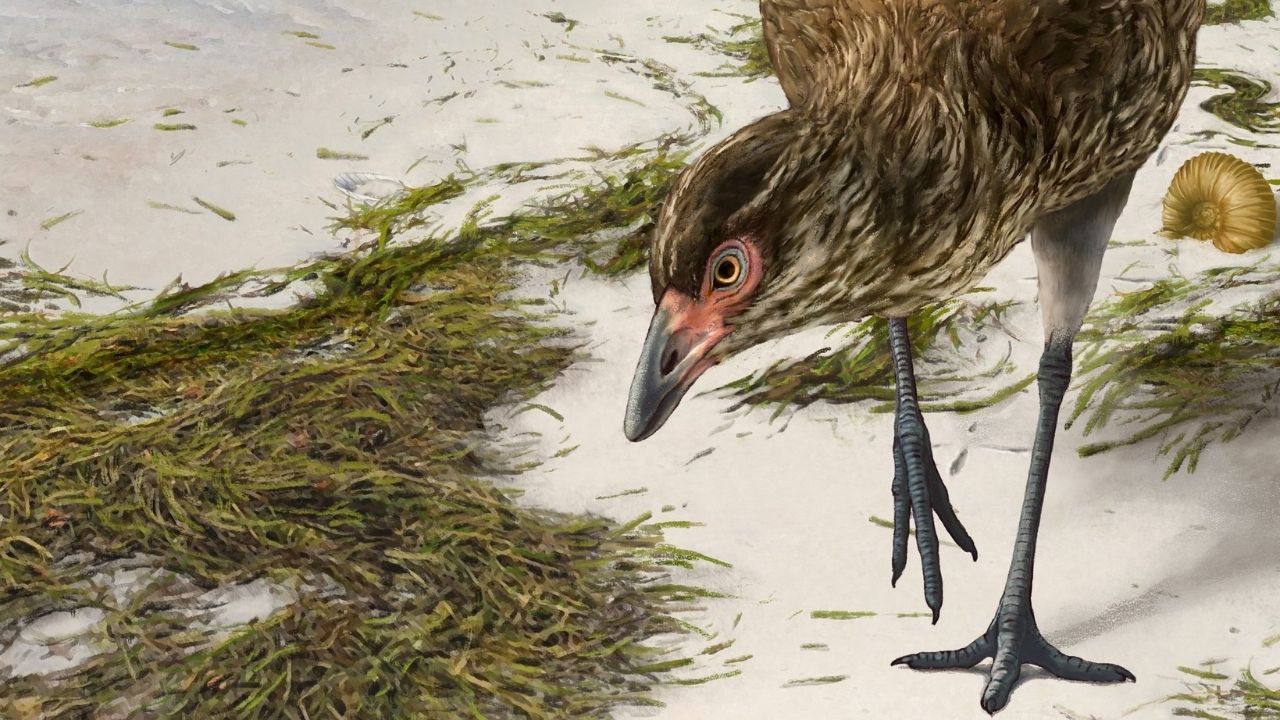
Wonderchicken might sound like a superhero, but it's actually a fascinating prehistoric bird that lived around 66.7 million years ago. This ancient creature, officially named Asteriornis maastrichtensis, provides a unique glimpse into the early evolution of modern birds. Discovered in Belgium, Wonderchicken's fossil is one of the oldest and most well-preserved bird fossils ever found. Its discovery has helped scientists understand how birds survived the mass extinction that wiped out the dinosaurs. With a chicken-like skull and features similar to ducks, Wonderchicken bridges the gap between ancient and modern avian species. Ready to learn more? Here are 35 incredible facts about Wonderchicken!
Key Takeaways:
- Wonderchicken, the oldest modern bird, provides insights into bird evolution, survived mass extinction, and lived in a warm, coastal habitat.
- Its discovery has influenced paleontology education, sparked public interest, and inspired ongoing research, making Wonderchicken a fascinating subject in the study of prehistoric life.
What is Wonderchicken?
Wonderchicken, scientifically known as Asteriornis maastrichtensis, is a fascinating prehistoric bird. Discovered in 2020, it has provided incredible insights into avian evolution. Let's dive into some amazing facts about this ancient bird.
-
Oldest Known Modern Bird: Wonderchicken is the oldest known modern bird, dating back to around 66.7 million years ago.
-
Fossil Discovery: The fossil was found in a limestone quarry in Belgium.
-
Skull Preservation: Its skull is remarkably well-preserved, offering a rare glimpse into early bird anatomy.
-
Size Comparison: Wonderchicken was about the size of a modern-day quail.
-
Evolutionary Link: It bridges the gap between dinosaurs and modern birds.
The Significance of Wonderchicken
Wonderchicken's discovery has shed light on the evolution of birds. Here are some key points highlighting its significance.
-
Pre-K-Pg Boundary: It lived just before the Cretaceous-Paleogene (K-Pg) extinction event.
-
Survival Insight: Its existence suggests some bird lineages survived the mass extinction.
-
Anatomical Features: The skull shows a mix of ancient and modern features.
-
Diet Clues: Its beak shape indicates a diet of seeds and small insects.
-
Flight Capability: Wonderchicken likely had the ability to fly.
The Discovery Process
The journey to uncover Wonderchicken was filled with meticulous research and groundbreaking technology.
-
CT Scanning: Researchers used CT scanning to study the fossil without damaging it.
-
Hidden Skull: The skull was hidden inside a rock, only revealed through advanced imaging.
-
International Collaboration: Scientists from the UK, Belgium, and the US worked together on this discovery.
-
Years of Research: It took years of research to confirm the significance of the fossil.
-
Published Findings: The findings were published in the journal Nature in March 2020.
Wonderchicken's Environment
Understanding the environment in which Wonderchicken lived helps paint a picture of its life.
-
Coastal Habitat: It lived in a coastal environment, likely near shallow seas.
-
Climate: The climate was warm and humid during its time.
-
Vegetation: Dense forests and lush vegetation surrounded its habitat.
-
Predators: Potential predators included small theropod dinosaurs.
-
Coexistence: Wonderchicken coexisted with other early bird species.
Evolutionary Implications
Wonderchicken has provided valuable information about the evolutionary history of birds.
-
Early Divergence: It represents an early divergence from other bird lineages.
-
Ancestral Traits: Some traits are shared with both ancient and modern birds.
-
Adaptive Radiation: Its discovery supports the theory of rapid bird diversification after the K-Pg extinction.
-
Morphological Diversity: Wonderchicken adds to the known morphological diversity of early birds.
-
Evolutionary Timeline: It helps refine the timeline of bird evolution.
Wonderchicken's Legacy
The legacy of Wonderchicken continues to influence paleontology and our understanding of avian history.
-
Educational Impact: It has become a key subject in paleontology education.
-
Museum Exhibits: Fossil replicas are displayed in museums worldwide.
-
Public Interest: The discovery has sparked public interest in prehistoric life.
-
Further Research: Ongoing research aims to uncover more about its life and environment.
-
Inspiration for Scientists: Wonderchicken inspires new generations of paleontologists.
Fun Facts About Wonderchicken
Here are some fun and lesser-known facts about this ancient bird.
-
Nickname Origin: The nickname "Wonderchicken" was coined by the research team due to its remarkable preservation.
-
Media Coverage: Its discovery was widely covered by media outlets globally.
-
Artistic Reconstructions: Artists have created detailed reconstructions based on the fossil.
-
Scientific Debates: Its discovery has sparked debates about bird evolution among scientists.
-
Cultural Impact: Wonderchicken has even inspired merchandise like T-shirts and posters.
The Wonderchicken's Legacy
The Wonderchicken isn't just a cool name; it's a window into our planet's past. This ancient bird, which lived around 66.7 million years ago, helps scientists understand the evolution of modern birds. Its discovery in Belgium has shed light on how birds survived the mass extinction that wiped out the dinosaurs. With its mix of features from both ancient and modern birds, the Wonderchicken shows the transition from prehistoric to present-day avians. This fossil is a reminder of the resilience of life and the ongoing quest for knowledge. As researchers continue to study it, we can expect even more fascinating insights into the history of birds. The Wonderchicken stands as a testament to the incredible journey of life on Earth, bridging the gap between the age of dinosaurs and the world we know today.
Frequently Asked Questions
Was this page helpful?
Our commitment to delivering trustworthy and engaging content is at the heart of what we do. Each fact on our site is contributed by real users like you, bringing a wealth of diverse insights and information. To ensure the highest standards of accuracy and reliability, our dedicated editors meticulously review each submission. This process guarantees that the facts we share are not only fascinating but also credible. Trust in our commitment to quality and authenticity as you explore and learn with us.
